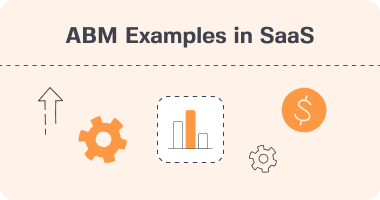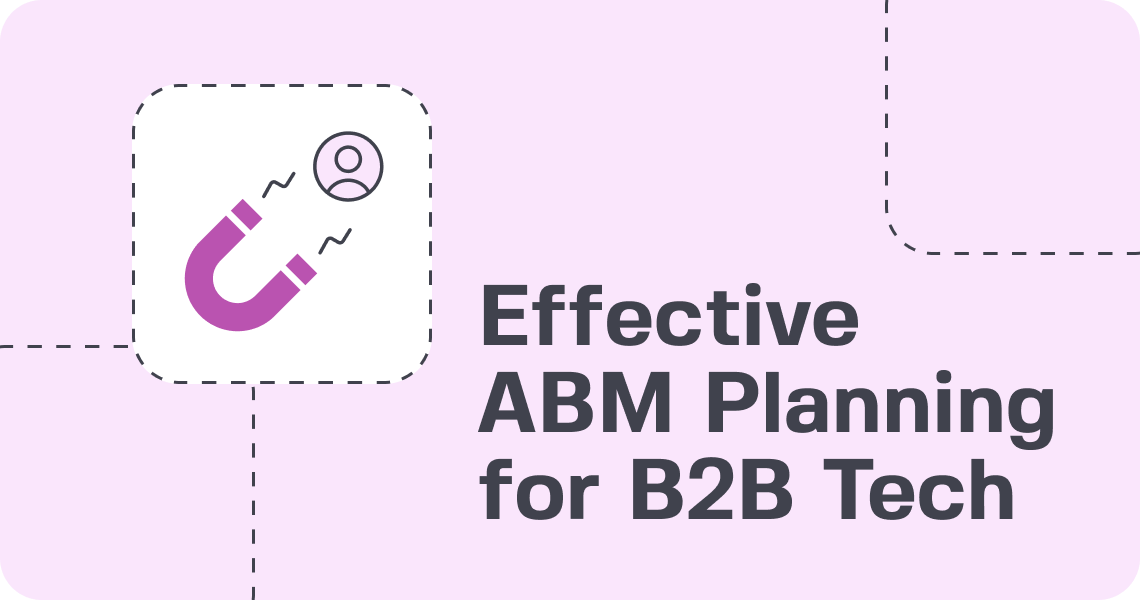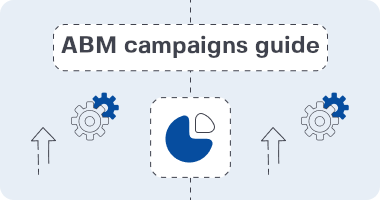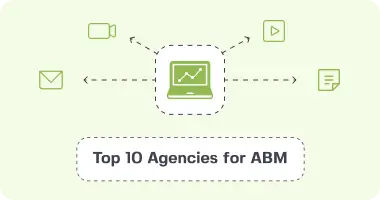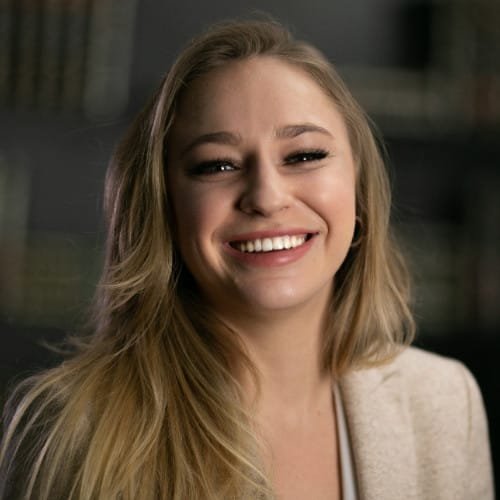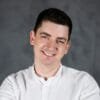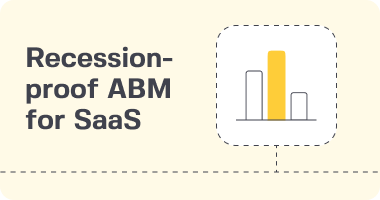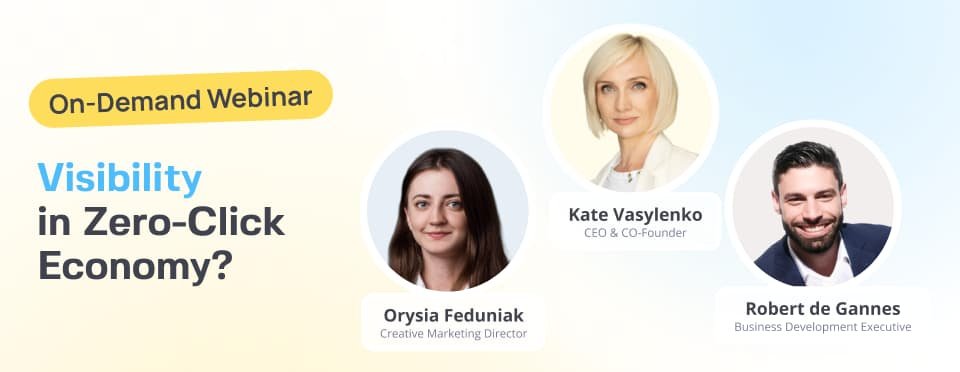During times of uncertainty, it’s essential for businesses to remain agile and concentrated. Adopting an account-based marketing approach can be a deliberate and economical way of conducting sales and marketing activities, allowing you to effectively target specific accounts with enhanced efficiency and effectiveness. By utilizing MarTech data and insights, ABM strategies can drive higher ROI and align sales and marketing teams. Account based advertising is another method for targeting specific companies with tailored ads. An ABM marketing strategy can help you allocate your resources towards the most important accounts, design tailored engagement plans, and continuously measure and improve your outcomes in real-time, while also being mindful of your budget and maximizing your return on investment (ROI).
Introduction to Account-Based Marketing
Account-based marketing (ABM) is a strategic approach to B2B marketing that focuses on targeting high-value accounts and decision-makers with personalized content, messaging, and experiences. Unlike traditional marketing strategies that cast a wide net, ABM zeroes in on specific accounts that are most likely to drive significant revenue growth. By aligning sales and marketing teams, ABM enables businesses to deliver consistent customer experiences, build strong relationships, and drive revenue growth.
The essence of ABM lies in its ability to tailor marketing efforts to the unique needs and pain points of each target account. This personalized approach not only enhances the effectiveness of marketing campaigns but also ensures that resources are allocated to the highest value accounts. By focusing on the accounts that matter most, businesses can achieve better results and maximize their return on investment (ROI).
In this introduction, we will explore the fundamentals of ABM, its benefits, and how it can be implemented to achieve business success. Whether you’re new to ABM or looking to refine your existing strategy, understanding the core principles of ABM is essential for driving meaningful engagement and revenue growth.
What is Account-Based Marketing?
Account-Based Marketing (ABM) is a strategic B2B marketing approach that focuses on targeting high-value customer accounts with personalized content and experiences. Unlike traditional marketing strategies that cast a wide net, ABM zeroes in on specific accounts that are most likely to drive significant revenue growth. This approach involves a close alignment between sales and marketing teams to identify, engage, and convert key accounts into loyal customers.
By tailoring marketing efforts to the unique needs and pain points of each target account, businesses can significantly enhance the effectiveness of their campaigns. This targeted approach not only improves sales alignment but also maximizes the return on investment (ROI) by focusing resources on the highest value accounts. In essence, ABM transforms the way businesses approach marketing, making it more strategic, efficient, and impactful. To better understand ABM, consider various account-based marketing examples where businesses have successfully implemented these strategies to drive significant revenue growth. Tracking performance and measuring the effectiveness of an account-based strategy is crucial for adapting and optimizing marketing efforts.
ABM vs Traditional Lead-Based Marketing
| Feature | Traditional Marketing | Account-Based Marketing |
|---|---|---|
| Focus | Individual leads | High-value accounts |
| Strategy | Inbound lead gen | Targeted outreach |
| Personalization | Generalized messaging | Tailored content |
| Sales/Marketing | Often siloed | Fully aligned |
| Funnel | Wide to narrow | Narrow to deep |
ABM flips the traditional funnel, starting with the best-fit accounts and expanding within them.
Benefits of Account-Based Marketing
Account-Based Marketing (ABM) empowers businesses to focus their efforts on high-value target accounts, delivering personalized and impactful content that drives engagement and conversions. By leveraging intent signals and advanced martech tools, ABM aligns marketing and sales teams to prioritize opportunities over leads, resulting in higher efficiency and ROI.
Intent Signals to Reach More Target Accounts
Inbound marketing can complement ABM to attract and engage target accounts, utilizing account targeting and intent data to identify and convert enrolled accounts into opportunities through customized content strategies. Utilizing programmatic ABM allows for greater potential, enabling businesses to achieve similar quantitative results as those in a thriving economy, facilitated by state-of-the-art and efficient martech architectures.
Opportunities Over Leads for Sales and Marketing Teams
With the aid of focused and extensive content strategies, programmatic ABM programs are capable of captivating and cultivating high-intent accounts while simultaneously gathering valuable engagement insights for the account team. Advanced AI tools further amplify the potential, allowing for personalized content ideas to be produced at scale with reduced resource requirements and at a faster pace, benefiting both the marketing and sales teams.
Shorten the Sales Pipeline with Account-Based Marketing
With the added intelligence gained about opportunities, marketing and sales teams can align marketing efforts to efficiently close customers, leading to a shorter sales cycle by prioritizing existing accounts with higher intent. By focusing on these accounts, a significant impact can be made on the sales pipeline.

8-step proven ABM framework
When facing challenging economic conditions, it can be risky to rely solely on traditional ABM and ABX practices, which have traditionally been applied to only a small number of accounts with a high level of personalization. Even accounts with strong intent signals can become high-risk investments, as the situation can rapidly change. Therefore, it becomes crucial to implement ABM and ABX practices at scale to mitigate the risks of prolonged sales cycles and achieve timely goals.
In short, we suggest dividing ABM campaign into 3 parts:
- Know your customer
- Plan personalized experience
- Deliver at scale with ABM tech
To implement these stages, we at growth marketing agency 42DM develop a stage-by-stage account-based marketing framework:
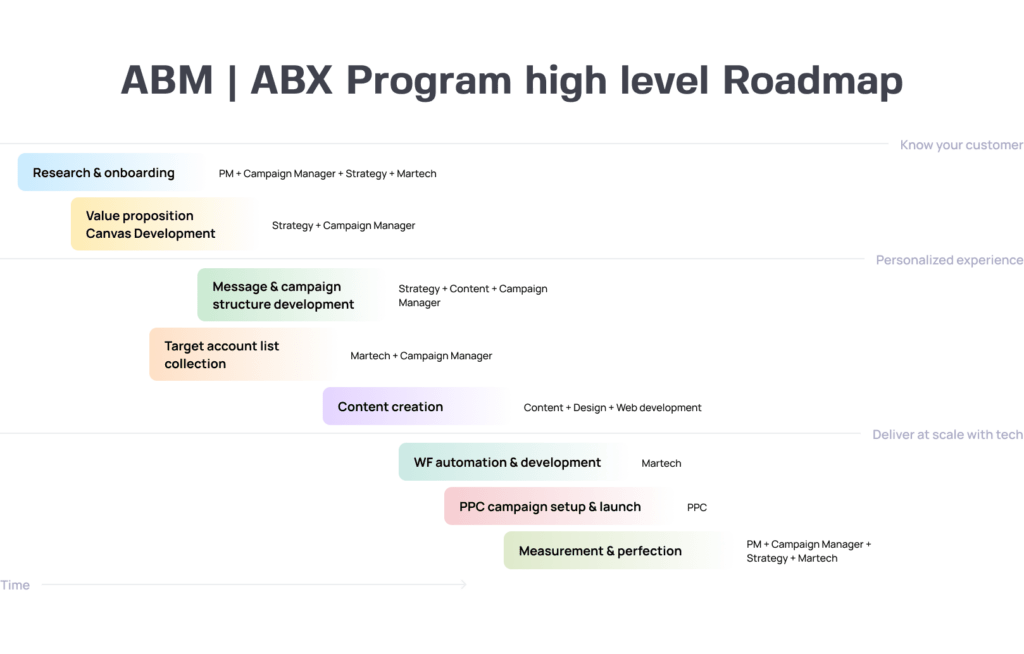
- Step 1: Research, Onboarding & Resources Alignment
Preparing your company for ABM requires several crucial steps, such as establishing goals and budgets, comprehending your target audience, identifying the company’s needs, and assessing available resources. To facilitate this process, various tools are employed to evaluate resources, conduct market research, and gain a comprehensive understanding of the current situation. - Step 2: Value proposition canvas development
The objective is to develop a value proposition that will serve as a central reference point for content creation, encompassing target audience segments, Jobs-To-Be-Done (JTBD), as well as their respective pains and gains. - Step 3: Target Audience Collection
A critical component for the success of ABM is to have a highly specific and well-defined list of target audiences, comprising the individuals that the business intends to convert into customers. Collecting target audience data can be accomplished through various tools, which are typically combined for enhanced effectiveness. For example, Snovio and Triblio are useful tools, providing email, LinkedIn, and domain information of target audiences in a single platform. - Step 4: Messages & Campaign Structure Development
Once an advanced target audience list is established, the next step is to strategize how to reach them, resulting in the development of a content plan and roadmap. To ensure that the plan is data-driven, various tools such as Google Analytics, Hubspot, Marketo, and others are employed. - Step 5: Content & Assets Development
This stage involves the creation of various content types to support the ABM program, including email templates, landing pages, blogs, articles, and social media posts, among others. ChatGPT is an excellent resource for conducting research and proofreading the content, while Pepperflow facilitates content curation and distribution. For designing purposes, Figma and Adobe are our preferred tools. - Step 6: Marketing Automation & Development
The next step is to automate as many sales and marketing processes as possible. This involves utilizing various tools such as Hubspot as a CRM, Marketo for marketing automation, Zapier and Reply for email marketing automation, and Triblio for running multi-channel campaigns. - Step 7: Ads Campaigns Setup & Launch
Once all the preparatory stages are completed, the focus shifts to setting up ABM & ABX campaigns. This involves leveraging tools to ensure that the content is visible to the target audience. Triblio and Influ2 are useful for detecting intent signals and running campaigns, in conjunction with other advertising applications. - Step 8: Measurement & Perfection
The last step involves measuring the results and fine-tuning the campaign to achieve the best possible outcome. Analytics tools are particularly useful for audience and messaging analytics.
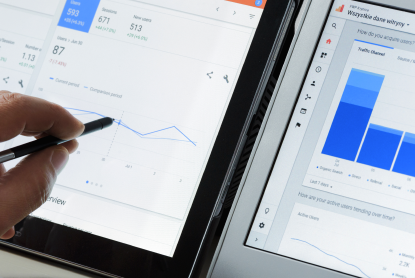
Creating an Account Based Marketing Strategy
Creating an effective Account-Based Marketing strategy requires a structured and methodical approach. Here are the key steps to follow:
Utilizing abm tech stack can significantly enhance the effectiveness of your ABM strategy by providing insights and facilitating collaboration between sales and marketing teams. Implementing account-based marketing strategies can further enhance this collaboration by focusing on personalized and targeted ABM marketing tactics for high-value accounts and emphasizing the importance of tracking and measuring results to adapt and optimize approaches for the best outcomes.
- Identify Target Accounts: Start by analyzing your existing customer base to identify high-value accounts that align with your business goals. Consider factors such as company size, industry, and revenue potential to pinpoint the accounts that offer the greatest opportunities for growth.
- Develop Buyer Personas: Create detailed buyer personas for each target account. These personas should include insights into their needs, pain points, and decision-making processes. Understanding these elements will help you tailor your marketing efforts more effectively.
- Align Sales and Marketing: Ensure that your sales and marketing teams are on the same page. Collaborate to develop a shared understanding of the target accounts and the overall marketing strategy. This alignment is crucial for the success of your ABM efforts.
- Create Personalized Content: Develop tailored content that addresses the specific needs and pain points of each target account. Personalized content is more likely to resonate with your audience and drive engagement.
- Measure and Optimize: Track the effectiveness of your ABM campaigns using data-driven metrics. Continuously analyze the results and make adjustments to optimize your strategy. This iterative process will help you achieve better outcomes over time.
By following these steps, you can create a robust ABM strategy that drives meaningful engagement and revenue growth.
Identifying Target Accounts
Identifying target accounts is a crucial step in developing an effective account-based marketing (ABM) strategy. This involves analyzing existing customer accounts, industry trends, and market research to determine which accounts have the highest potential for revenue growth. Sales and marketing teams must work together to identify key accounts that align with the company’s goals and objectives. By focusing on high-value target accounts, businesses can maximize their marketing efforts and increase the chances of conversion. ABM campaigns can be tailored to specific accounts, allowing for personalized messaging and content that resonates with decision-makers.
Building a Team
Building a team is essential for successful account-based marketing efforts. This team should consist of representatives from both sales and marketing departments, as well as other stakeholders who can provide valuable insights into the target accounts. The team should work together to develop an ABM strategy, identify target accounts, and create personalized content and messaging. By aligning sales and marketing teams, businesses can ensure that their ABM efforts are cohesive and effective. The team should also be responsible for tracking key metrics and adjusting the ABM strategy as needed to optimize results.
Implementing Account-Based Marketing
Implementing an account-based marketing strategy requires a thorough understanding of the target accounts, their needs, and pain points. It involves identifying key accounts, creating personalized content and messaging, and leveraging various marketing channels to attract target accounts and engage with decision-makers. Here are the key steps involved in implementing an ABM strategy:
- Identify Target Accounts: Start by analyzing your existing customer base to identify high-value accounts that align with your business goals. Consider factors such as company size, industry, and revenue potential to pinpoint the accounts that offer the greatest opportunities for growth.
- Develop Buyer Personas: Create detailed buyer personas for each target account. These personas should include insights into their needs, pain points, and decision-making processes. Understanding these elements will help you tailor your marketing efforts more effectively.
- Create Personalized Content: Develop tailored content that addresses the specific needs and pain points of each target account. Personalized content is more likely to resonate with your audience and drive engagement.
- Leverage Marketing Channels: Utilize various marketing channels to reach and engage with decision-makers within your target accounts. This may include email marketing, social media, direct mail, and account based advertising.
- Measure and Optimize: Track the effectiveness of your ABM campaigns using data-driven metrics. Continuously analyze the results and make adjustments to optimize your strategy. This iterative process will help you achieve better outcomes over time.
By following these steps, you can create a robust ABM strategy that drives meaningful engagement and revenue growth.
Personalized Content and Messaging
Personalized customer experiences and messaging are critical components of an ABM strategy. By creating content that resonates with the target audience, businesses can establish trust, build credibility, and differentiate themselves from competitors. Personalized messaging involves tailoring the message to the specific needs and interests of the target account, increasing the likelihood of engagement and conversion.
To achieve this, it’s essential to develop a deep understanding of each target account’s pain points, goals, and decision-making processes. This information can be gathered through research, data analysis, and direct interactions with the accounts. Once you have a clear picture of your target audience, you can create content that speaks directly to their needs and challenges.
Personalized content can take various forms, including email campaigns, blog posts, whitepapers, case studies, and social media posts. The key is to ensure that each piece of content is relevant and valuable to the target account, helping to build a strong relationship and move them further along the sales funnel.
Paid Advertising and Retargeting
Paid advertising and account targeting are effective ways to reach target accounts and decision-makers. By leveraging platforms like LinkedIn, Google Ads, and Facebook, businesses can target specific accounts, job titles, and industries, increasing the reach and impact of their ABM efforts.
Paid advertising allows you to place your message directly in front of the decision-makers within your target accounts. By using precise targeting options, you can ensure that your ads are seen by the right people at the right time. This can help to raise awareness, generate interest, and drive engagement with your brand.
Retargeting involves serving ads to users who have previously interacted with your business, such as visiting your website or engaging with your content. This helps to keep your brand top-of-mind and nurture leads through the sales cycle. By staying visible and relevant, you can increase the chances of converting these leads into customers.
Role of Sales and Marketing Teams
The success of an ABM strategy relies heavily on the alignment and collaboration of sales reps and marketing teams. Sales teams provide valuable insights into the target accounts, their needs, and pain points, while marketing teams develop and execute the ABM strategy. By working together, sales and marketing teams can ensure that the ABM efforts are targeted, relevant, and effective in driving revenue growth and business success.
Here are the key roles and responsibilities of sales and marketing teams in an ABM strategy:
- Identifying Target Accounts and Decision-Makers: Sales teams can leverage their knowledge and experience to identify high-value target accounts and key decision-makers within those accounts. This information is crucial for developing a focused and effective ABM strategy.
- Developing Personalized Content and Messaging: Marketing teams are responsible for creating personalized content and messaging that resonates with the target accounts. By collaborating with sales teams, they can ensure that the content addresses the specific needs and pain points of each account.
- Leveraging Marketing Channels to Engage with Target Accounts: Marketing teams use various channels, such as email marketing, social media, direct mail, and account-based advertising, to reach and engage with decision-makers within the target accounts. Sales teams can support these efforts by providing insights and feedback on what resonates with the accounts.
- Measuring and Optimizing ABM Efforts: Both sales and marketing teams should work together to track the effectiveness of the ABM campaigns. By analyzing data and metrics, they can identify areas for improvement and make adjustments to optimize the strategy.
- Aligning Sales and Marketing Teams to Ensure a Unified Approach: Regular communication and collaboration between sales and marketing teams are essential for the success of an ABM strategy. By aligning their efforts, they can ensure a consistent and unified approach to engaging with target accounts.
By understanding the fundamentals of ABM and implementing a well-planned strategy, businesses can drive revenue growth, build strong relationships with target accounts, and establish themselves as leaders in their industry. In the next section, we will explore the benefits of ABM and how it can be used to achieve business success.
Account Qualification and Targeting
Account qualification and targeting of individual accounts are critical components of an effective ABM strategy. Here are some key considerations to keep in mind:
- Account Scoring: Develop a scoring system to evaluate the potential value of each target account. Factors such as company size, industry, and revenue potential should be considered to determine which accounts are worth pursuing.
- Target Account Selection: Based on your scoring system and business goals, select a subset of correct accounts to focus on, ensuring that your resources are allocated to the accounts with the highest potential for success.
- Account Profiling: Develop detailed profiles for each target account. These profiles should include information about their needs, pain points, and decision-making processes. A thorough understanding of each account will enable you to tailor your marketing efforts more effectively.
- Contact Identification: Identify key decision-makers and influencers within each target account. Knowing who to engage with is crucial for the success of your ABM campaigns.
By carefully qualifying and targeting accounts, you can ensure that your ABM efforts are focused on the most promising opportunities.
Common Barriers to ABM Success
While ABM can be a highly effective marketing strategy, there are several common barriers to success that businesses should be aware of:
- Lack of Alignment: One of the biggest ABM challenges is ensuring that sales and marketing teams are aligned on the target accounts, messaging, and overall strategy. Misalignment can lead to inconsistent messaging and missed opportunities.
- Insufficient Data: Limited data on target accounts can make it difficult to develop effective marketing campaigns. Without comprehensive insights, it’s challenging for a sales rep to create personalized content that resonates with your audience.
- Inadequate Content: A lack of relevant content can hinder your ability to engage target accounts. It’s essential to develop tailored content that addresses the specific needs and pain points of each account.
- Ineffective Measurement: Failure to track and measure the effectiveness of ABM campaigns can make it difficult to optimize your strategy. Without data-driven insights, it’s challenging to identify what’s working and what needs improvement.
By addressing these common barriers, businesses can enhance the effectiveness of their ABM efforts and achieve better results.
Measuring and Optimizing ABM
Measuring and optimizing ABM campaigns to enhance customer relationships is critical to achieving success. Here are some key metrics to track:
- Account Engagement: Track engagement metrics such as email opens, clicks, and conversions. These metrics provide insights into how well your content is resonating with your target accounts.
- Conversion Rates: Monitor conversion rates from lead to opportunity to customer, and track various marketing metrics to understand the conversion rates at each stage of the sales process.
- Revenue Growth: Track revenue growth from target accounts. This metric is a direct indicator of the success of your ABM efforts.
- Return on Investment (ROI): Compare the ROI of your ABM campaigns to other marketing strategies. This comparison helps determine the overall effectiveness and efficiency of your ABM approach.
By tracking these metrics and making data-driven decisions, businesses can optimize their ABM strategy and achieve greater success. Continuous measurement and optimization are key to staying agile and responsive in a dynamic market environment.
Tracking Key Metrics
Tracking key metrics is critical to measuring the success of an account-based marketing strategy. This includes monitoring website traffic, engagement rates, conversion rates, and revenue growth. By tracking account-based marketing metrics, businesses can determine which ABM campaigns are most effective and make data-driven decisions to optimize their marketing efforts. Sales and marketing teams should work together to establish clear goals and objectives, as well as key performance indicators (KPIs) to measure the success of their ABM efforts. This will help to ensure that the ABM strategy is aligned with the company’s overall business goals and objectives.
Real-Life Examples and Case Studies
There are many real-life examples and case studies that demonstrate the effectiveness of account-based marketing. For instance, companies like Salesforce and Microsoft have used ABM to target high-value accounts and increase revenue growth. By using personalized content and messaging, these companies have been able to engage decision-makers and build strong relationships with their target accounts. Other companies, such as HubSpot and Marketo, have also seen success with ABM by using data and analytics to identify and target key accounts. These examples demonstrate the potential of ABM to drive business growth and revenue expansion.
Conclusion
In conclusion, account-based marketing is a powerful strategy for businesses looking to drive revenue growth and expand their customer base. By identifying target accounts, building a team, and tracking key metrics, businesses can develop an effective ABM strategy that resonates with decision-makers and drives conversions. ABM is a highly personalized approach that requires alignment between sales and marketing teams, as well as a deep understanding of the target audience. By using data and analytics to inform their ABM efforts, businesses can optimize their marketing campaigns and achieve greater ROI. Whether you’re a B2B company looking to expand your customer base or a marketing team seeking to drive revenue growth, account-based marketing is a strategy worth considering. With its focus on personalized content and messaging, ABM has the potential to revolutionize the way businesses approach marketing and sales, and is an essential component of any comprehensive marketing strategy.
Want to leverage your sales & marketing resources?
To achieve success in ABM, B2B companies must identify their ideal client profile, create a customized content strategy, and utilize personalized technology to connect all channels and activities. While a comprehensive list of martech tools is available, implementing and integrating them to produce results requires expert knowledge. Fortunately, 42DM is prepared to act as your ABM leader and guide you through the process. Click here to chat with us!


